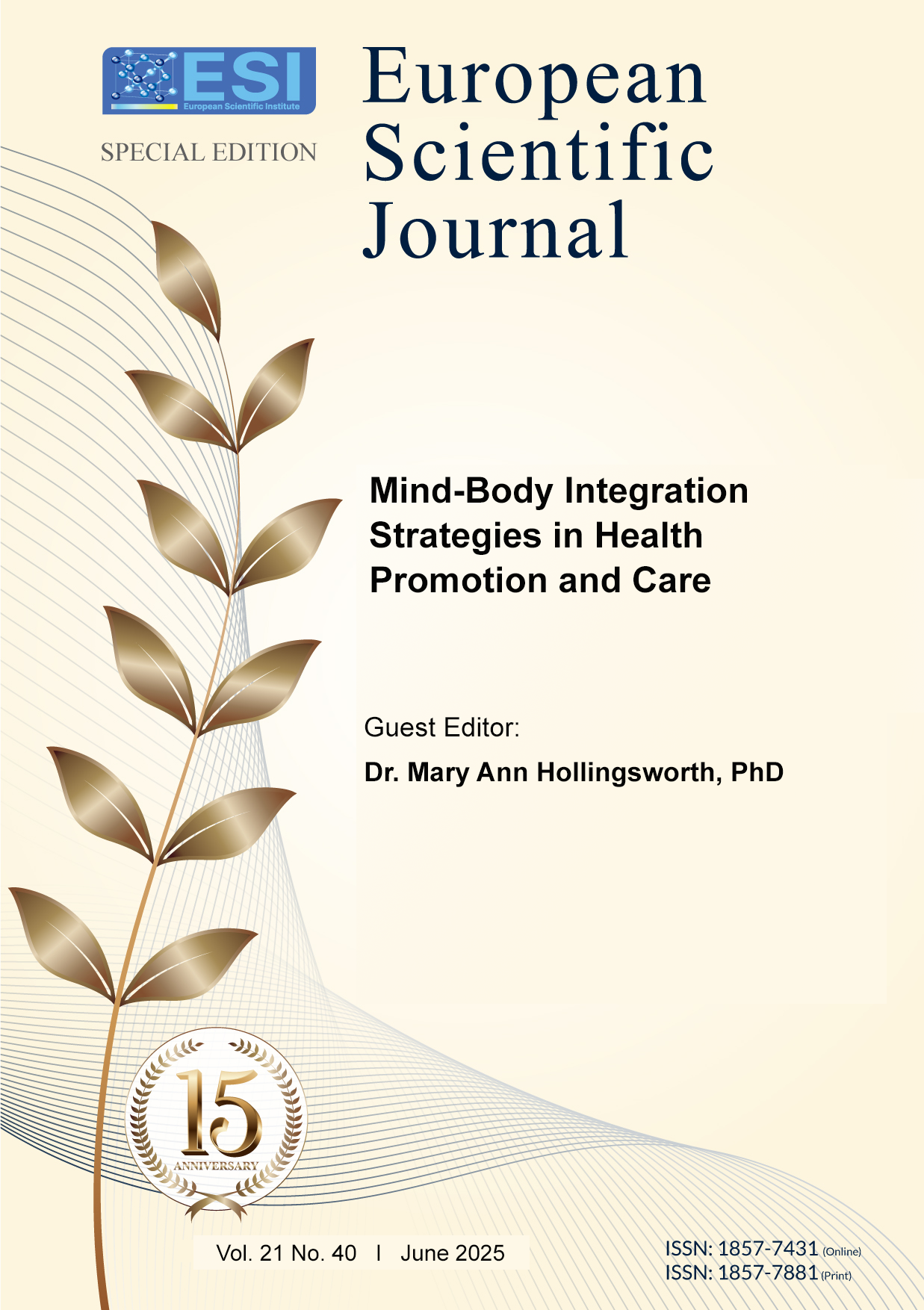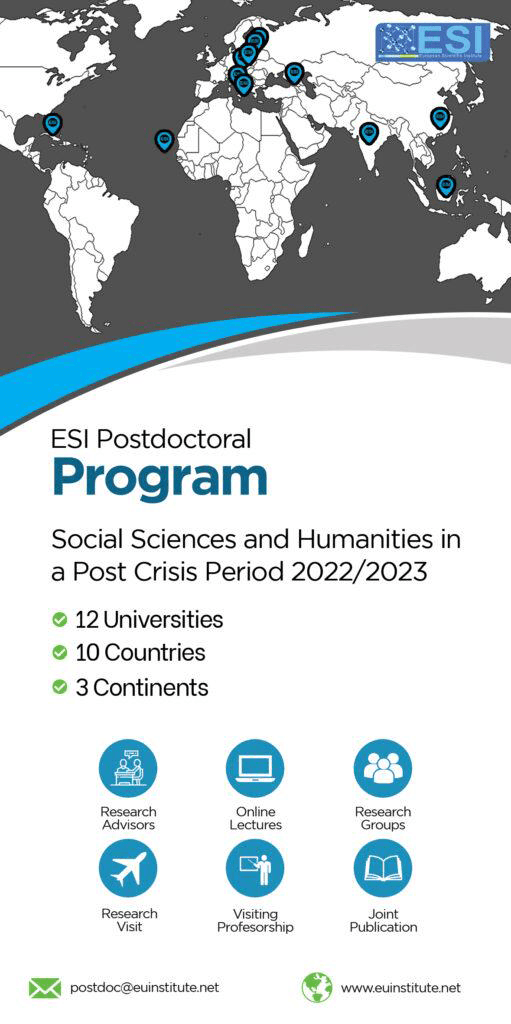A Phenomenological and Qualitative Pilot Study Addressing the Necessary Competencies for Becoming a Competent Sandtray Therapy Practitioner
Abstract
This phenomenological and qualitative pilot study aimed to understand mental health practitioners' perspectives on the competencies that sandtray therapy providers should include in their training programs for individuals to become competent sandtray therapy practitioners. While this creative and sensory-based approach was developed for young children, mental health practitioners have found it a valuable therapeutic tool for non-verbally communicating their innermost thoughts and feelings across the lifespan. Even though sandtray therapy has been used by mental health practitioners for over thirty years as an alternative to traditional talk therapy, it is not widely recognized as an evidence-based psychotherapeutic approach by the mental health profession. Through semi-structured interviews and a focus group discussion, the study’s four participants articulated how the International Association of Sandtray Therapy (IAST) training program imparted specialized knowledge and skills essential for mental health practitioners in developing vital competencies to become competent sandtray therapy practitioners. While the World Association of Sand Therapy Professionals (WASTP) has proposed that sandtray therapy training programs adopt a universal set of competencies, the study’s four participants debated whether this is necessary. Analysis of the study’s data revealed three themes: professional integration of sandtray therapy, integrating somatic experiences and neurological processes, and establishing criteria for becoming a competent sandtray therapy practitioner. This pilot study examined how these three themes relate to the competencies these participants perceived as critical for becoming competent sandtray therapy practitioners.
Downloads
Metrics
PlumX Statistics
References
2. Beeson, E. T., & Field, T. A. (2017). Neurocounseling: A new section of the journal of mental health counseling. Journal of Mental Health Counseling, 39(1), 71–83. https://doi.org/10.17744/mehc.39.1.06
3. Beeson, E. T., Field, T. A., Reckner, J. L., Luke, C., & Jones, L. K. (2019). Neuroscience research, training, and practice: Adding to or subtracting from counselor identity? Journal of Counselor Leadership and Advocacy, 6(2), 97–113. https://doi.org/10.1080/2326716x.2019.1617210
4. Beste, C. (2021). Disconnected psychology and neuroscience—Implications for scientific progress, replicability and the role of publishing. Communications Biology, 4(1). https://doi.org/10.1038/s42003-021-02634-9
5. Cozolino, L. J. (2014). The neuroscience of human relationships: Attachment and the developing social brain (2nd ed.). W.W. Norton & Company.
6. De Little, M. (2020). Using the sand tray in the context of the latest neuroscience research to transform clients’ defences. Canadian Journal of Counselling and Psychotherapy, 54(3), 259–285. https://doi.org/https://cjc-rcc.ucalgary.ca/article/view/69457
7. Dumaresq, E., & McFerran, K. S. (2024). A critical and interpretive synthesis of arts-based methods used by dance therapy researchers: A perspective from the creative arts therapies. Methods in Psychology, 11, 100152. https://doi.org/10.1016/j.metip.2024.100152
8. Duros, P., & Crowley, D. (2014). The body comes to therapy, too. Clinical Social Work Journal, 42(3), 237–246. https://doi.org/10.1007/s10615-014-0486-1
9. Field, T. A. (2014). Integrating left-brain and right-brain: The neuroscience of effective counseling. The Professional Counselor, 4(1), 19–27. https://doi.org/10.15241/taf.4.1.19
10. Freedle, L., McGee, M., Blechman, S., Souza, J., & Zandbergen, D. L. (2021). The lava ate my school: The use of group sandplay to reduce anxiety and post-traumatic stress in displaced elementary school students. Journal of Sandplay Therapy, 30(2), 129–147. https://doi.org/10.61711/jst.2021.30.2.323
11. Gladding, S. T. (2021). The Creative Arts in Counseling. American Counseling Association.
12. Goss, D. (2016). Integrating neuroscience into counseling psychology. The Counseling Psychologist, 44(6), 895–920. https://doi.org/10.1177/0011000016650263
13. Grabbe, L., & Miller-Karas, E. (2017). The trauma resiliency model: A “bottom-up” intervention for trauma psychotherapy. Journal of the American Psychiatric Nurses Association, 24(1), 76–84. https://doi.org/10.1177/1078390317745133
14. Grayson, R. (2021). Healing the embodied brain: The neurobiology of sandtray therapy, In R. Grayson & T. Fraser (Eds.) The embodied brain and sandtray therapy: Stories of healing and transformation (1st ed., pp. 28-53). Routledge. https://doi.org/10.4324/9781003055808-4
15. Harris, S. (2021). When it’s OK not to think: Using the music of silence, sound, and language to recover a live object for a child frozen into a ‘robot’ state of mind by trauma. Journal of Child Psychotherapy, 47(2), 205–221. https://doi.org/10.1080/0075417x.2021.1991082
16. Hartwig, E. K., Homeyer, L., & Stone, J. (2023). Sand therapy competencies: A qualitative investigation of competencies for sand therapy practitioners. World Journal for Sand Therapy Practice, 1(5), 1–20. https://doi.org/10.58997/wjstp.v1i5.32
17. Holliman, R., & Foster, R. D. (2023). The way we play in the sand: A meta-analytic investigation of sand therapy, its formats, and presenting problems. Journal of Child and Adolescent Counseling, 9(2), 205–221. https://doi.org/10.1080/23727810.2023.2232142
18. Homeyer, L. E. (2019). History of sand therapy. World Association of Sand Therapy Professionals. https://worldsandtherapy.org/page/history
19. Homeyer, L. E., & Stone, J. (2023). Sand therapy standards: Views from the field. World Journal for Sand Therapy Practice, 1(1), 1–11. https://doi.org/10.58997/wjstp.v1i1.4
20. Homeyer, L. E., & Sweeney, D. S. (2017). Sand tray therapy: A variety of approaches. In B. A. Turner (Ed.), The Routledge international handbook of sandplay therapy (pp. 328–338). Routledge. https://doi.org/10.4324/9781315656748-22
21. In, J. (2017). Introduction of a pilot study. Korean Journal of Anesthesiology, 70(6), 601. https://doi.org/10.4097/kjae.2017.70.6.601
22. Kern Popejoy, E., Perryman, K., & Broadwater, A. (2020). Processing military combat trauma through sandtray therapy: A phenomenological study. Journal of Creativity in Mental Health, 16(2), 196–211. https://doi.org/10.1080/15401383.2020.1761499
23. Mende, M. A., & Schmidt, H. (2021). Psychotherapy in the framework of embodied cognition—does interpersonal synchrony influence therapy success? Frontiers in Psychiatry, 12. https://doi.org/10.3389/fpsyt.2021.562490
24. Perryman, K., Blisard, P., & Moss, R. (2019). Using creative arts in trauma therapy: The neuroscience of healing. Journal of Mental Health Counseling, 41(1), 80–94. https://doi.org/10.17744/mehc.41.1.07
25. Porges, S. W. (2022). Polyvagal theory: A science of safety. Frontiers in Integrative Neuroscience, 16. https://doi.org/10.3389/fnint.2022.871227
26. Reid, M. (2021). Finding safety: Healing attachment wounds in the sandtray therapy process, In R. Grayson & T. Fraser (Eds.) The embodied brain and sandtray therapy: Stories of healing and transformation (1st ed., pp. 193-207). Routledge. http://dx.doi.org/10.4324/9781003055808-14
27. Rogers, J. L., Luke, M., & Darkis, J. T. (2020). Meet me in the sand: Stories and self-expression in sand tray work with older adults. Journal of Creativity in Mental Health, 16(1), 2–14. https://doi.org/10.1080/15401383.2020.1734513
28. Schadler, G. (2023). Introduction to sand therapy through the lens of sandtray-worldplay. World Journal for Sand Therapy Practice, 1(8). https://doi.org/10.58997/wjstp.v1i8.39
29. Schoonover, T. “T. J.,” Jha, P., Romito, M., Arogundade, B., & DePinto, A. (2024). Sandtray therapy’s impact on trauma symptoms in adults. Journal of Creativity in Mental Health, 19(3), 1–17. https://doi.org/10.1080/15401383.2024.2377410
30. Shafir, T., Orkibi, H., Baker, F. A., Gussak, D., & Kaimal, G. (2020). Editorial: The state of the art in creative arts therapies. Frontiers in Psychology, 11. https://doi.org/10.3389/fpsyg.2020.00068
31. Sweeney, D. S. (2017). Sandtray therapy: A neurobiological approach. In Creative Psychotherapy Applying the principles of neurobiology to play and expressive arts-based practice (1st ed., pp. 157–170). Routledge.
32. Wang, Y., Vlemincx, E., Vantieghem, I., Dhar, M., Dong, D., & Vandekerckhove, M. (2022). Bottom-up and cognitive top-down emotion regulation: Experiential emotion regulation and cognitive reappraisal on stress relief and follow-up sleep physiology. International Journal of Environmental Research and Public Health, 19(13). https://doi.org/10.3390/ijerph19137621
33. Wheeler, N., & Dillman Taylor, D. (2016). Integrating interpersonal neurobiology with play therapy. International Journal of Play Therapy, 25(1), 24–34. https://doi.org/10.1037/pla0000018
Copyright (c) 2025 Deborah Kay Webb-Johnson

This work is licensed under a Creative Commons Attribution 4.0 International License.








